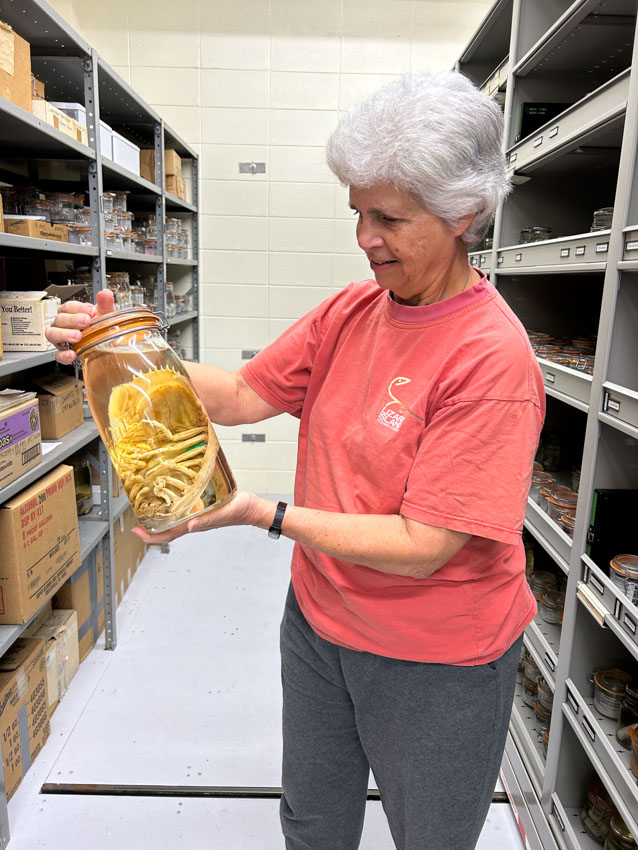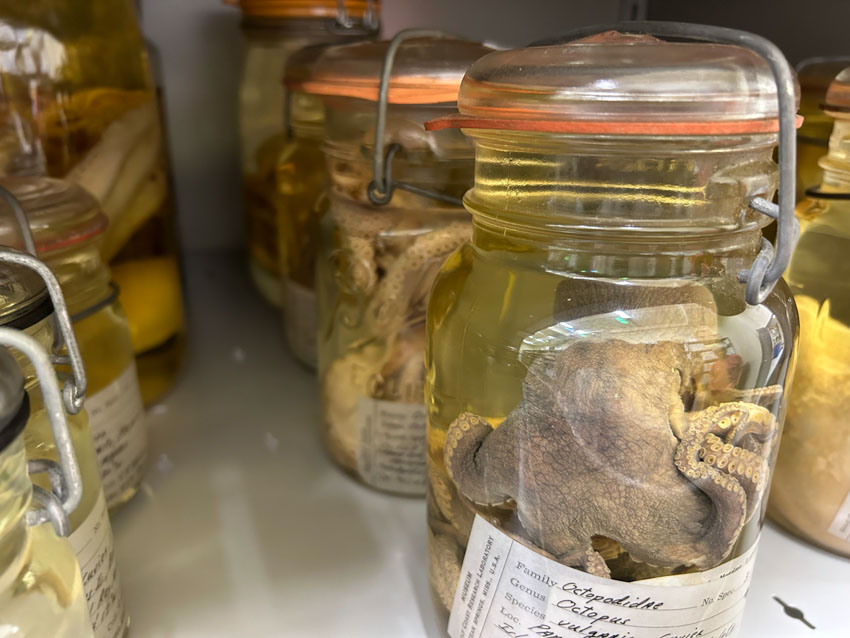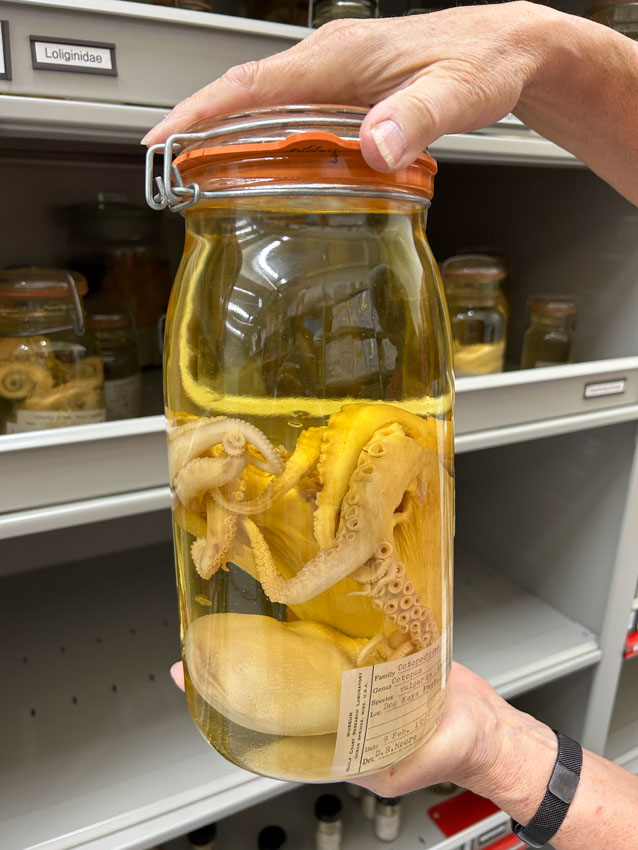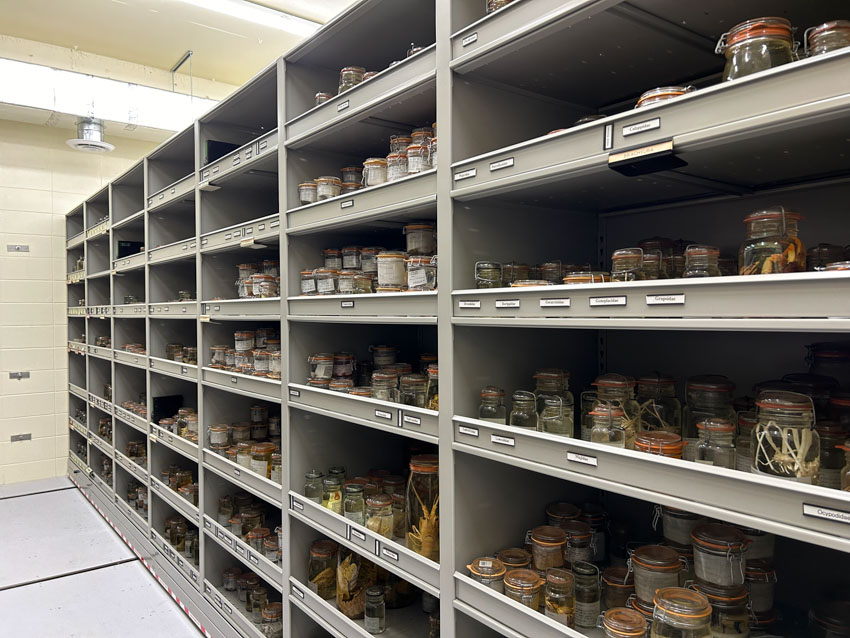GCRL Museum Curator Sparks Passion for Research Specimens
Wed, 03/13/2024 - 10:03am | By: Gabriela Shinskie

Nestled between research labs and classrooms lies the University of Southern Mississippi (USM) Gulf Coast Research Laboratory (GCRL) Museum where 43,200 jars of marine specimens from around the globe are stored for research.
Sara LeCroy, museum curator, radiates joy as she walks through the aisles of sea sponges, starfish, sharks, crustaceans, fish, and sea urchins. She began her role as curator in 2000 after 15 years in the Invertebrate Zoology Section at GCRL. Since LeCroy’s arrival, her goal has been to conduct invertebrate research and improve the facility’s invertebrate and fish collection.
“We have some really cool pipefish and seahorses, along with scorpion fish,” LeCroy said. “It’s hard to have a favorite.”

Each day is different. Sometimes LeCroy identifies different specimens requested by USM researchers or educators to use for a hands-on classroom setting while also welcoming students at the museum looking for a deep dive into specific marine specimen morphology. She also publishes results specific to the specimens in scientific papers, provides information to international researchers and identifies new material for the collections, while she and her staff provide services to the research community and public through taxonomic workshops and publication of identification guides, among other types of assistance.
“I like being able to work with a variety of people and critters,” said LeCroy. “You get to meet a lot of people by interacting with them about their research and the material they’re interested in.”

Specimens are stored in glass jars with an accompanying identification card. The research information that can be collected from each jar is based on questions asked by the researcher, examination methods, and analytical methods used. The museum’s collection numbers in the tens of thousands of jars, with specimens primarily collected from the coast of Latin America, the Western Atlantic and the Gulf of Mexico, but it does include material from every ocean on the planet.
Charles E. Dawson was the museum’s first curator in 1958. He published 150 papers on coastal species and traveled to Central and South America, collecting various marine species. Dawson retired in 1985 and passed the baton to Stuart G. Poss, who took on the extensive role of converting the museum’s collection from typed catalog cards to an electronic database. Poss was also responsible for constructing a new preparation room for specimen research and housing.

LeCroy enhanced Poss’ electronic database with modern software and continues to grow the research and educational efforts of the GCRL museum by working with Marine Education Center staff to offer tours and provide specimen information for educational activities to students from local and regional schools, regardless of their age group.
When pressed to identify her favorite specimen, LeCroy concedes her love for the little crustaceans that live in sea sponges.
“They’re really cool,” she said.
Learn more about the Gulf Coast Research Laboratory Museum.